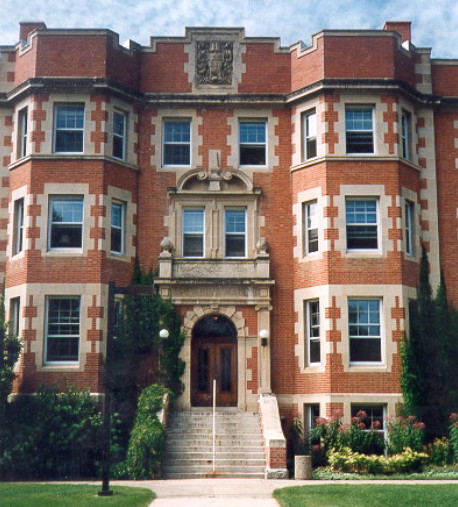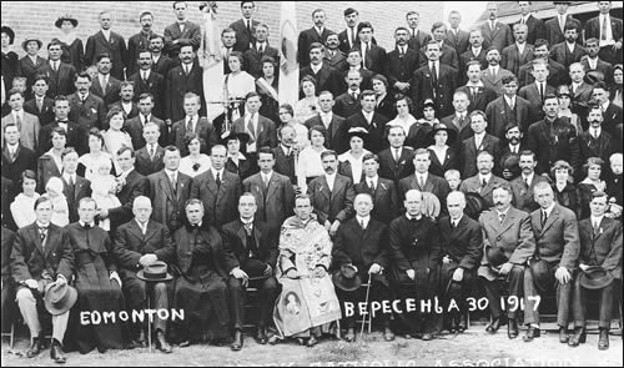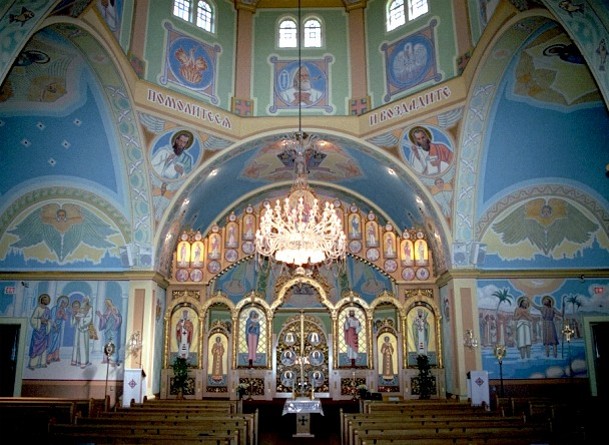Edmonton
Edmonton (Едмонтон). See Map. Capital city (2006 pop 1,024,825) of the province of Alberta in western Canada. There were 144,620 residents of Ukrainian origin in Edmonton in 2006 (102,955 of them of multiple ethnic background). They formed 14.1 percent of the population as well as the largest Ukrainian urban community in Canada.
Ukrainians started settling in Edmonton at the end of the 19th century. At that time a branch line of Canadian Pacific Railroad running north from Calgary to Edmonton provided the main transport access for immigrants looking to take up homesteads in the burgeoning Ukrainian bloc settlement area in east central Alberta. Notwithstanding the substantial numbers of immigrants passing through Edmonton at that time, the settlement itself had only a small number of resident Ukrainians. Most of them were women employed as domestics. Ukrainian settlement in Edmonton grew after the Canadian Northern Railway reached the growing settlement in 1905, opening employment opportunities in city works, meat packing and other enterprises (among them, providing supplies and services to Ukrainians heading to homesteads or the Alberta coal fields). A number of modest Ukrainian businesses and pioneer institutions, including Saint Josaphat’s Ukrainian Catholic Cathedral (built in 1904), the city's first bookstore (restored in the historical Fort Edmonton Park) and Canada's first Ukrainian students' residence or bursa (1912) were developed before the First World War. Prominent local Ukrainians at this time included Michael Gowda, Paul Rudyk, and Gregory Krakiwsky
Over time Edmonton has become a major center of Ukrainian life in Canada. It has been the see of the western eparchy of the Ukrainian Orthodox Church of Canada since 1951 and since 1948 of the Edmonton exarchate (after 1956, eparchy) of the Ukrainian Catholic church. Other notable Ukrainian institutions include Saint John's Institute; Ukrainian News Publishers, which puts out the bilingual Ukraïns’ki visti/Ukrainian News; the Canadian Institute of Ukrainian Studies at the University of Alberta; the Ukrainian Resource and Development Centre at Grant MacEwan College; and the Ukrainian Canadian Archives and Museum of Alberta. In 1974 the first English-Ukrainian bilingual or partial immersion classes in the public school system (see Ukrainian bilingual education), which subsequently spread to other prairie centers, were established in Edmonton. Ukrainian businessman William Hawrelak was elected mayor of Edmonton four times between 1951 and 1977. Laurence Decore, a Ukrainian politician, served as mayor from 1983 to 1988. Several Ukrainians have served as city aldermen and represented Edmonton in the Alberta legislature (William Tomyn, Ambrose Holowach, Wasyl Diachuk, Albert Hohol, Julian Koziak, and Gene Zwozdesky) and the federal House of Commons (Holowach, William Skoreyko, Steve Paproski).
[This article was updated in 2009.]



.jpg)